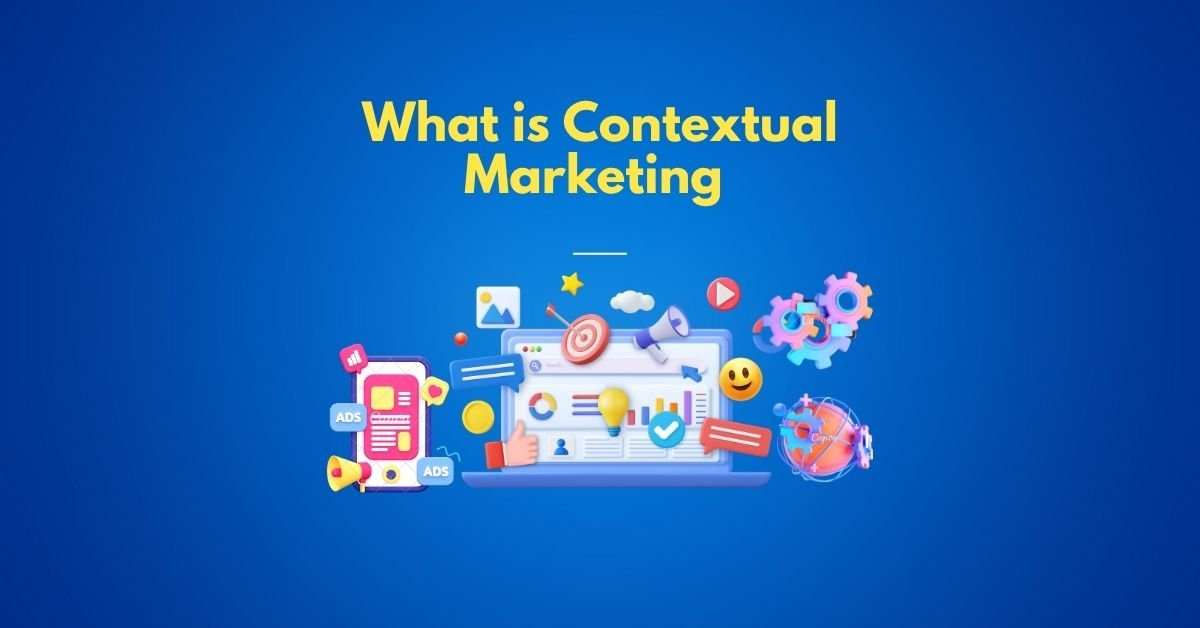
And context advertising is changing how businesses target their customers. Whether or not you ever got an ad or recommendation that seemed decidedly in tune with what you needed right at that moment, the odds are good you’ve been subjected to contextual marketing. But what is it exactly, how does it work, and how can it help companies like yours?
In this article, we’ll walk you through the basics of contextual marketing, the main advantages of using it, and how to successfully use it in your marketing to create better relationships with your customers and increase your ROI.
What is Contextual Marketing
What is contextual marketing? Contextual marketing is simply a strategy used to serve personalized, privately relevant content as well as recommendations or ads, according to what the person is doing at the moment. This might be their browsing behavior, search intent, location, and previously established common ways of interacting with your brand.
Traditional marketing, which tends to be demographic-based, Contextual marketing is time-sensitive and personal. It matches marketing messages with a user’s immediate needs or interests, which makes your marketing communication feel more like a service to your customers, and not a distraction.
Contextual Marketing vs Behavior-Based Marketing
You may have heard of behavioral marketing, and there are similarities between the two, but they’re not the same. Historical behavior analysis is also an element of behavioral marketing — for example, purchases or websites visited in the past. Contextual marketing, in contrast, is completely time-based. For instance, if someone is looking for “best hiking boots,” a contextual ad could display hiking boots directly, even if the user hasn’t looked for similar products before.
Pros of Contextual Marketing

More Useful for Consumers
With contextual marketing, your content, offers, and promotions will be relevant to your audience. You’re able to get users the information they need at the right time, when it will most help them solve problems or fulfil needs, which inevitably leads to a higher engagement rate.
Improved Customer Experience
Do you prefer a generic ad about furniture or an ad that features sofas following a search for “living room design tips”? tag and mediate between content marketing and performance marketing. We do this through contextual marketing, which means we help businesses get to know their users better while at the same time offering users a better experience with personalized ads and content.
Higher Conversion Rates
Content or advertising that transcends consumer intent typically does better. The more you can tailor your marketing messages to what your prospects are looking for, the more likely they are to respond, which will result in higher conversion rates and a higher ROI.
Efficient Use of Ad Spend
Precision Targeting: Businesses can eliminate the waste in throwing away ad budget on a campaign that is irrelevant, and more as seen as too wide. Rather, they can concentrate their spend on the right messages for the right people at the right time.
Greater Trust and Loyalty
Brands that offer value (not just push products) on a regular basis and demonstrate that they know what their audience is looking for build trust. Over time, this builds trust and contributes to longer-term customer relationships.
What Contextual Marketing Is and How It Works
Similarly, contextual marketing uses again here, a set of data, algorithms, and tools to make sense of what’s happening in the user’s nearby context. Here’s how it plays out in reality.

Step 1. Data Collection
The starting point of contextual marketing is collecting user data. This could be anything from the context of keywords being searched for and the webpage where they’re searched, to your IP address or geographic location, and even the weather in your area at the time.
Step 2. Analysis
Advanced algorithms are subsequently applied to analyze the contextual data. Brands may use machine learning and AI methods and tools to comprehend and predict users’ intent, so the most accurate content is chosen for them.
Step 3. Content Matching and Delivery
After the data has been evaluated, very focused materials or promotions are presented to the audience. For instance, a person reading a fashion blog post about spring trends might see ads for lightweight coats or floral dresses.
Step 4. Real-Time Updates
One of the strengths of contextual marketing is that it’s nimble. Contexts can change rapidly — for example, someone who recently looked online for pizza may now be hunting movie tickets. Being able to tweak messaging live keeps content current.
Contextual Marketing in the Real World

Advertising: Google’s Contextual Ad Targeting
Even forums are showing Google Ads on them. Their system serves ads on web pages that are contextually based on the page content and keywords. For instance, if someone is reading a travel blog, he might quickly find that he has hotel and travel insurance advertisements on that blog, directly matching to his current interest level.
Spotify: Even More Personalized Playlists
For playlists like “Morning Motivation” or “Chill Afternoon,” Spotify relies on data that’s contextual, like time of day, user location, and listening history. They also deliver personalized ads to listeners that are contextually relevant to the listener.
Starbucks: Offers Based on the Weather
Weather is also used by Starbucks to fine-tune its marketing. For example, on a warm day, users of the Starbucks app may see promotions for cold beverages, while people in colder areas may see ads for seasonal hot drinks, like pumpkin spice lattes.
Amazon: Friends and Family – Product Suggestions
Amazon’s advanced search algorithms take into account context such as real-time search queries and category browsing to recommend products. Enter “home office desks,” for example, and related items like an ergonomic chair or desk lamp will automatically be displayed.
How to Do Contextual Marketing
If you’re ready to start integrating contextual marketing into your approach, here’s how to start.
Understand Your Audience
First and foremost — get to know your customer base inside and out — and figure out what they typically do. What do they value? Where and when do they engage with your brand? Collect data using resources like Google Analytics, surveys of customers and readers, and social media insights.
Use AI and Automation Tools
AI and machine learning also have a key role in allowing you to analyze data in real time. The seamless integration with HubSpot, Salesforce, and Google Ads helps businesses leverage contextual marketing quickly.
Mobile and Geo-Centric Targeting
Dig into your mobile and geo-centric targeting.
Physical location is a huge driver of context. Leverage geo-targeting features to adjust ads and campaigns for geographical area audience targeting. For instance, in-restaurant offers directly relevant to a customer’s current location often receive the highest levels of engagement.
Optimize Content for Context
It goes beyond delivering ads. Optimize your content for context. If you’re running a blog, for example, prioritize SEO for the very keywords users are searching in real-time. Integrate “context-aware” CTAs (calls to action), such as recommending related guides or products based on the page they are currently browsing.
Measure and Iterate
Track analytics to quantify engagements, engagement rates, and conversion performance. Watch for patterns so that your strategies know what’s resonating and can adjust accordingly.
Find Out How the Power of Context Can Help You Market Better
Contextual marketing is not just a trendy buzzword. It’s a pragmatic, customer-focused guide to having your messages hit their mark, exactly when they’re needed. When you prioritize context, you have the ability to generate better engagement, higher customer satisfaction, and solid, measurable increases in your marketing ROI.
Want to discover how you can optimize your marketing strategy or carry out context-based marketing? Work with professionals or take advantage of new tools that can help make this easier for your business.
You can Learn more: What Is Secondary Market Research?
Leave a Reply